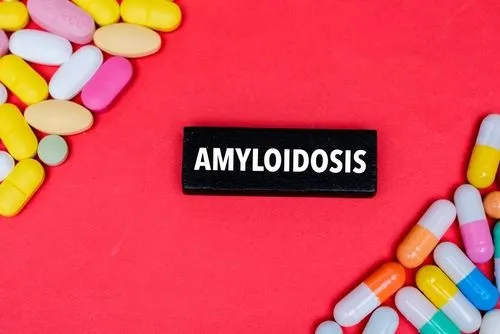Using an Oral Proteasome Inhibitor as Maintenance Therapy for Transplant Ineligible Myeloma Patients

Results from a new study show that the oral proteasome inhibitor ixazomib (Ninlaro) can effectively and safely be used as maintenance therapy for transplant ineligible patients and provided a 34.1% improvement in progression free survival compared to no maintenance therapy.
Maintenance therapy is a common way to extend myeloma remissions after initial treatment. When looking at real world data, about one third of myeloma patients never received a second line of therapy. Since the first remission is the most durable remission, using the best treatments up front is essential for newly diagnosed patients. Today, immunomodulators are used commonly as maintenance therapy and monoclonal antibodies have more recently been used. Proteasome inhibitors can also be used as maintenance, but there are no proteasome inhibitors currently FDA approved as maintenance therapy in myeloma.
In the TOURMALINE-MM4 Phase III study, 706 newly diagnosed, transplant ineligible myeloma patients from 187 sites and 34 countries were treated with "standard of care" myeloma combinations as induction therapy. Over 82% of patients received a proteasome inhibitor and over 32% of patients received a monoclonal antibody. Then they were broken into two groups for maintenance therapy. There were 425 myeloma patients in the the ixazomib maintenance group and 281 patients in the placebo maintenance group.
With a mean follow up of 21.1 months, there was a significant reduction in risk of progression or death in the ixazomib group vs. the placebo group.
| Ixazomib maintenance | Placebo maintenance | |
|
Median PFS since maintenance start |
17.4 months | 9.4 months |
| Median PFS since start of all therapy | 26.3 months | 20.3 months |
| Response improvements during maintenance | 14.6% | 8.2% |
| Mean PFS for patients who had CR or VGPR after induction therapy | 25.6 months | 12.9 months |
According to the study:
Although no PFS benefit was seen in the small subgroup of patients with conventional high-risk cytogenetics [t(4;14), t(14;16), del(17p)], ixazomib showed a PFS benefit in the larger subgroup with expanded high-risk cytogenetics, incorporating patients with amp1q21 in line with the current IMWG definition of high-risk cytogenetics.
For patients who responded well to their initial therapy and achieved a complete response (CR) or very good partial response (VGPR), ixazomib provided the first oral proteasome inhibitor option that more than doubled remission. The study was the first to determine the impact of a specific drug as maintenance therapy while being agnostic to the initial induction therapy, randomly assigning patients to ixazomib versus placebo regardless of the standard-of-care induction therapy received for these myeloma patients.
Ixazomib was well tolerated as maintenance therapy in this elderly population and the therapy may be a good option to consider as maintenance for patients who are not eligible for a stem cell transplant. Additionally, ixazomib may provide a valuable maintenance option in combination with other agents, such as immunomodulatory drugs and monoclonal antibodies.
Results from a new study show that the oral proteasome inhibitor ixazomib (Ninlaro) can effectively and safely be used as maintenance therapy for transplant ineligible patients and provided a 34.1% improvement in progression free survival compared to no maintenance therapy.
Maintenance therapy is a common way to extend myeloma remissions after initial treatment. When looking at real world data, about one third of myeloma patients never received a second line of therapy. Since the first remission is the most durable remission, using the best treatments up front is essential for newly diagnosed patients. Today, immunomodulators are used commonly as maintenance therapy and monoclonal antibodies have more recently been used. Proteasome inhibitors can also be used as maintenance, but there are no proteasome inhibitors currently FDA approved as maintenance therapy in myeloma.
In the TOURMALINE-MM4 Phase III study, 706 newly diagnosed, transplant ineligible myeloma patients from 187 sites and 34 countries were treated with "standard of care" myeloma combinations as induction therapy. Over 82% of patients received a proteasome inhibitor and over 32% of patients received a monoclonal antibody. Then they were broken into two groups for maintenance therapy. There were 425 myeloma patients in the the ixazomib maintenance group and 281 patients in the placebo maintenance group.
With a mean follow up of 21.1 months, there was a significant reduction in risk of progression or death in the ixazomib group vs. the placebo group.
| Ixazomib maintenance | Placebo maintenance | |
|
Median PFS since maintenance start |
17.4 months | 9.4 months |
| Median PFS since start of all therapy | 26.3 months | 20.3 months |
| Response improvements during maintenance | 14.6% | 8.2% |
| Mean PFS for patients who had CR or VGPR after induction therapy | 25.6 months | 12.9 months |
According to the study:
Although no PFS benefit was seen in the small subgroup of patients with conventional high-risk cytogenetics [t(4;14), t(14;16), del(17p)], ixazomib showed a PFS benefit in the larger subgroup with expanded high-risk cytogenetics, incorporating patients with amp1q21 in line with the current IMWG definition of high-risk cytogenetics.
For patients who responded well to their initial therapy and achieved a complete response (CR) or very good partial response (VGPR), ixazomib provided the first oral proteasome inhibitor option that more than doubled remission. The study was the first to determine the impact of a specific drug as maintenance therapy while being agnostic to the initial induction therapy, randomly assigning patients to ixazomib versus placebo regardless of the standard-of-care induction therapy received for these myeloma patients.
Ixazomib was well tolerated as maintenance therapy in this elderly population and the therapy may be a good option to consider as maintenance for patients who are not eligible for a stem cell transplant. Additionally, ixazomib may provide a valuable maintenance option in combination with other agents, such as immunomodulatory drugs and monoclonal antibodies.
about the author
Jennifer Ahlstrom
Myeloma survivor, patient advocate, wife, mom of 6. Believer that patients can contribute to cures by joining HealthTree Cure Hub and joining clinical research. Founder and CEO of HealthTree Foundation.
More on Treatment Advances
Trending Articles
Upcoming Events




Get the Latest Multiple Myeloma Updates, Delivered to You.
By subscribing to the HealthTree newsletter, you'll receive the latest research, treatment updates, and expert insights to help you navigate your health.











